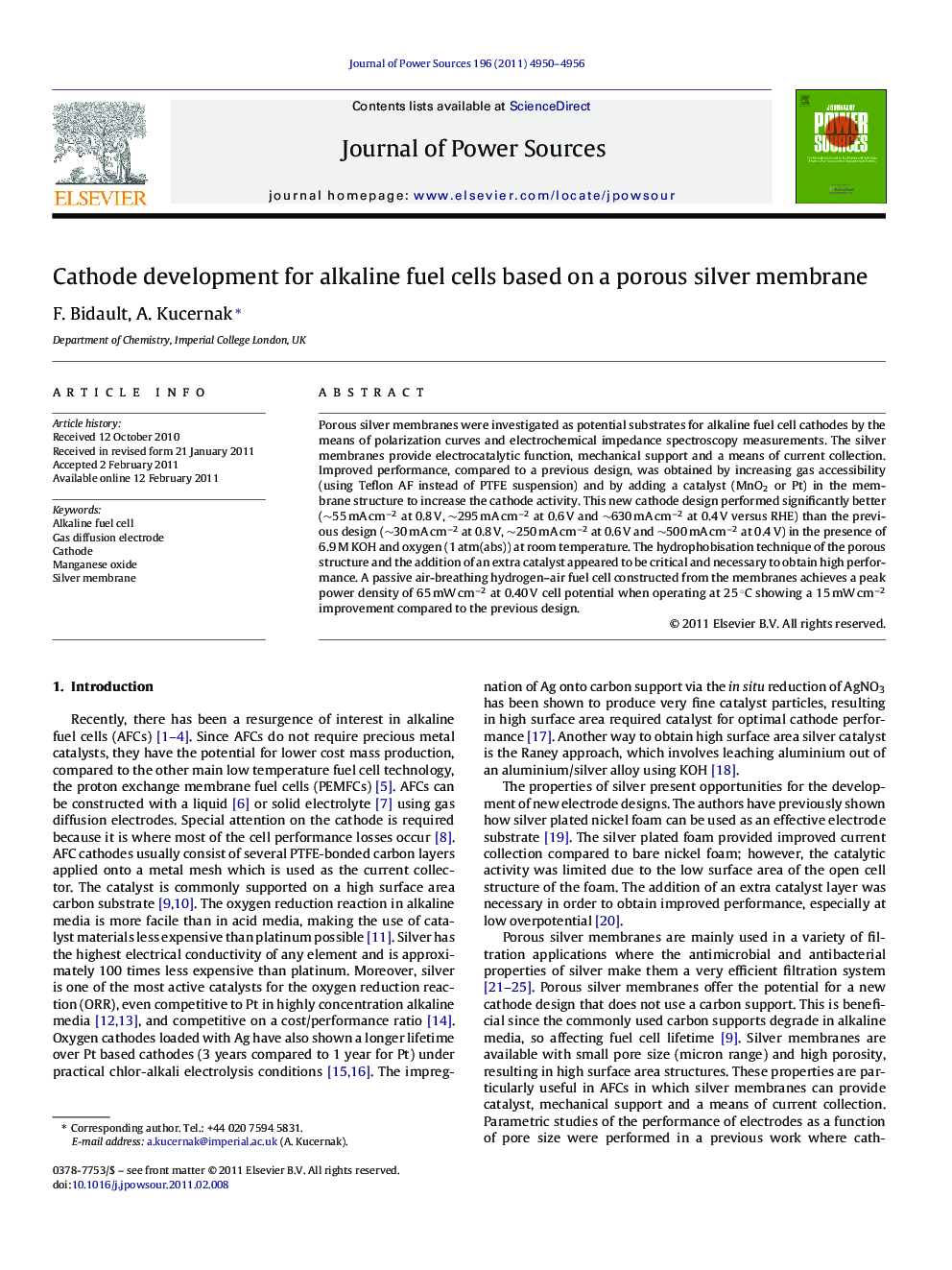| Article ID | Journal | Published Year | Pages | File Type |
|---|---|---|---|---|
| 1284760 | Journal of Power Sources | 2011 | 7 Pages |
Porous silver membranes were investigated as potential substrates for alkaline fuel cell cathodes by the means of polarization curves and electrochemical impedance spectroscopy measurements. The silver membranes provide electrocatalytic function, mechanical support and a means of current collection. Improved performance, compared to a previous design, was obtained by increasing gas accessibility (using Teflon AF instead of PTFE suspension) and by adding a catalyst (MnO2 or Pt) in the membrane structure to increase the cathode activity. This new cathode design performed significantly better (∼55 mA cm−2 at 0.8 V, ∼295 mA cm−2 at 0.6 V and ∼630 mA cm−2 at 0.4 V versus RHE) than the previous design (∼30 mA cm−2 at 0.8 V, ∼250 mA cm−2 at 0.6 V and ∼500 mA cm−2 at 0.4 V) in the presence of 6.9 M KOH and oxygen (1 atm(abs)) at room temperature. The hydrophobisation technique of the porous structure and the addition of an extra catalyst appeared to be critical and necessary to obtain high performance. A passive air-breathing hydrogen–air fuel cell constructed from the membranes achieves a peak power density of 65 mW cm−2 at 0.40 V cell potential when operating at 25 °C showing a 15 mW cm−2 improvement compared to the previous design.
Research highlights► Peak power of 65 mW cm−2 for passive air breathing fuel cell. ► Improved hydrophobic coatings result in no electrolyte permeation through GDL. ► Highly efficient cathode layer design utilising only 20 μg cm−2 Pt.
